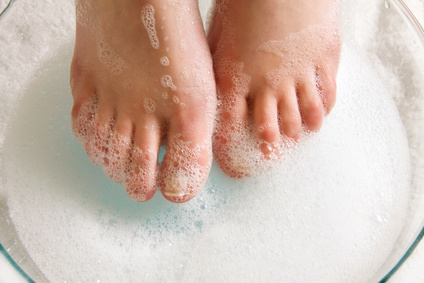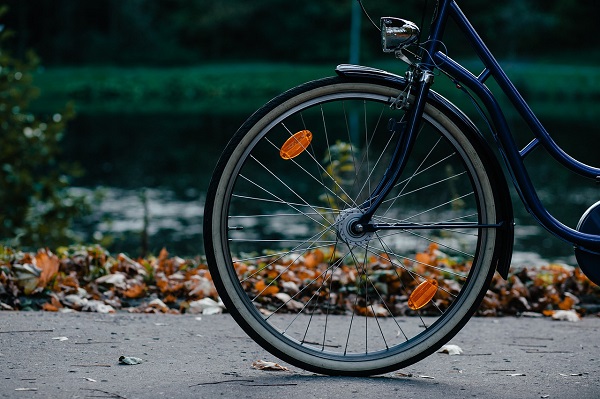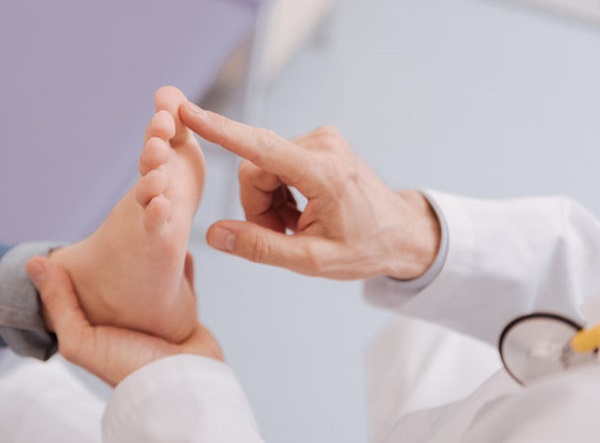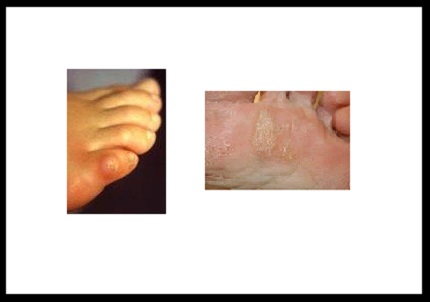Foot Care made Easy – The Daily Foot Check
What are the best Habits for Healthy Feet? We list and explain Easy ways to Care for your own feet. Everyday, tried and true actions that you can take which are suitable for everyone including people with diabetes. Easy solutions for day to day care for your own feet.
9 Easy ways to Care for your own feet
- Have a really careful look
- Wash and Dry Feet
- Moisturize the Skin
- Cut Nails properly
- Never Use “Corn Cures”
- Choose the right Socks
- Get your Shoes right too
- Avoid extremes of Temperature
- Get Help Early
1. Have a really careful look.
A proper look! From the lower leg to your toes. The Tips of your toes and in between too. Now underneath your heel – all the way around – and up the back and sides of the ankle. Then along the arch on the bottom of each foot to your toes. Toes are always worth a second look. If you don’t have the flexibility or the eyesight to check your feet, ask someone to check for you.
Can you see:
- Callus
- Corns
- Cracked Skin
- Change of nail color
- Broken skin in between the toes
Watch these items for 3 days, if no improvement seek medical advice
Can you see:
- Unusual swelling
- Redness
- Blisters
- Ingrown toenail
- Bruising
- Broken skin or Wound
Wash, dry, apply reputable antiseptic and cover with a sterile dressing. If there is no improvement in 24 hours seek medical advice
Can you see:
- Ooze, exudate, pus or discharge on your foot, socks or bed linen
You may have a foot infection. Seek Medical advice ‘TODAY’
2. Wash and Dry Daily
Daily foot washing is ideal. It gives you the opportunity to cleanse away dead skin cells sweat and bacteria. Drying carefully and exposing your feet to the air reduces the sogginess of the skin and the growth of fungal element and other infectious micro-organisms
Understandably, not everyone can or wants to shower or bathe every day. Time restraints, mobility limitations, climate and access to water are real issues for many people. However, we encourage you to find a way. Perhaps a bowl of water or at the very least a clean, moist cloth followed by a separate dry hand towel. You could even try a home-made foot washer. We cannot stress enough, how important the daily wash and dry is to the maintenance of good foot health. Find a Way.
3. Moisturize your feet daily
There is strong evidence that shows that dry skin is more susceptible to breaks in the skin and subsequent infection. Keeping the skin intact is a vital risk reduction strategy. Moisturize your whole foot except between the toes. But which cream to choose? A simple water based cream won’t do much if your skin is very dry with heavy callus or a Urea based cream may damage your skin if you are very dry with very thin skin. This can be very confusing and you can waste a lot of money on the wrong cream .I encourage you to talk to your pharmacist or Podiatrist about the right choice for you. If possible buy a small quantity or obtain a free sample to test with your skin.
4. Cut Toenails Properly
The Theory: Straight across or a very, very gently curved and not too short. That’s how toenails should be cut. A gentle file across any sharp edges. Easy?
The Reality: It sounds easy but we all know that it isn’t. What if the nail is thick or highly curved? What if the nail splits or breaks? What if you can’t reach? How do you cut the right little toe nail if you are right-handed?
What to Do: If you are having difficulty cutting your toenails straight across – for any reason – make an appointment with a Podiatrist. Ask for a toenail cutting lesson that suits your feet and your circumstances. Once you know, then it will be easy to cut your toenails properly.
5. Never use “Corn Cures”
There are dangerous products promoted as “Corn Cures”. Colourful packaging, cheaply priced, easy to use promising to make your foot pain miraculously disappear. If you have foot pain you are completely vulnerable to the seductive charms of the marketing. Many of these harmful products have an active ingredient that acts as an acid on the skin. So here is the problem. The acid cannot tell the difference between healthy skin and dead skin. The acid doesn’t know if you have circulation or nerve damage. The acid doesn’t know what is actually causing your pain. The acid just damages any skin with which it is in contact. As a Podiatrist I have had to fix countless serious, painful wounds caused by the use of inappropriate “Corn Cures”. Sometimes it is quicker, safer and cheaper to make an appointment with a Podiatrist when you first get foot pain.
6. Choose the right socks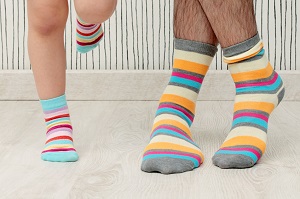
Wearing socks or stockings creates a layer of protection between your shoe and your skin. They also may provide moisture absorption and warmth. Here are 5 Sock Hints..
#1. Clean Socks Using the same socks day after day results in the build-up of dead skin cells, moisture , bacteria and other undesirable elements inside the sock. Resultant skin infections can very very painful and difficult to cure. Fresh socks every day is an easy foot health habit. The seams in socks and stockings, usually around the toes create a different problem.
#2. Seam-free Socks.. A seam next to the skin, in just the wrong location will cause pressure, resulting in blisters or callus within hours. People with nerve damage in the skin can develop a wound. A simple check of the bulkiness of a seam when buying socks is a great shopping habit. If your skin is particularly sensitive to seams, try wearing the sock inside.
#3. Too-Tight Socks Short socks scrunch the toes and narrow-tight socks squeeze the toes. Scrunching toes can lead to clawed toes while squeezed toes can lead to soft corns between the toes. If you have bought the wrong size socks, been gifted the wrong sized socks or have shrunk them in the wash it will be cheaper and much less painful to just get rid of them. Simple.
#4. Too-Thin Too-Thick Socks The right size shoe PLUS the right thickness sock PLUS your foot EQUALS comfort. The size of your foot is not negotiable so you had better get the other two elements right.
#5. No socks Some shoes are made with special smooth, breathable lining. These shoes, for example some sandals and high-end shoes, are suitable for sock-free wear. Most shoes are not suitable. Shoes without socks, apart from the blisters they cause, smell really bad.
7. Get your Footwear right too
Potential Footwear related foot problems include: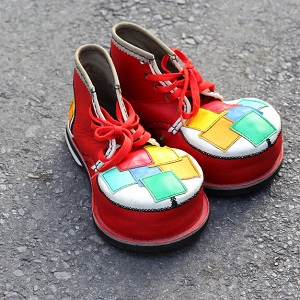
- Foot pain
- Blisters in areas of friction
- Overuse (soft tissue) injuries
- Stress fractures
- Heel pain
- Uneven sole wear and
- Vague foot fatigue
If you have a wardrobe filled with footwear mistakes it might be time for a Footwear Assessment by a Podiatrist. Buying the wrong shoes is frustrating, expensive and damaging to your feet.
A structured Footwear Assessment considers:
- Foot type
- Foot structure
- Biomechanics
- Previous injuries
- Preferred activity or sport
- Lifestyle
- Associated medical conditions
- Previous footwear choices
Recommendations can be made for suitable styles and features for sport, workplace, casual and special occasions footwear. Your Podiatrist can usually direct you to the right shop for your individual needs. You will be armed with the best information to make an informed decision so that you can buy with confidence. If you need more info about shoes read this…..
Best shoe buying tip: Shop for shoes in the afternoon when your feet are at their longest and widest. Shoes bought first thing in the morning may become devilishly tight and uncomfortable by late afternoon or evening.
8. Avoid Extremes of Temperature
The feet are particularly vulnerable to extremes of Temperature. A regular and constant flow of blood to the feet supports the health of skin, muscle, fat, tendon and bone.
Vaso-spasm Extremes of temperature may trigger the blood vessels into a state of vaso-spasm. Basically this means that the blood vessels widen and narrow and widen and narrow very quickly. These changes interrupt the smooth blood flow and subsequently interrupt the supply of oxygen and nutrients to the feet. Examples of triggers include: placing icy cold feet into hot water, or resting very cold barefoot directly on electric heating blankets in bed and even going from a lovely warm bed onto the cold tiles of a shower base in the bathroom. The consequences of vaso-spasm may include Chilblains (Erythema Pernio).
Cessation of Blood Flow Prolonged, severe exposure to cold is one of the causes of loss of blood flow (Ischaemia) to the feet. There are medical conditions in which blood clots stop the flow of blood. Wounds or necrosis (death of skin and tissues) may occur. This is very serious and medical attention must be sought immediately
9. Get Help Early
If you notice or feel a change in your feet seek professional advice. Early intervention, if required, will assist recovery. For more information click through to our Foot Care Action Plan.
Please note that the information on this site is general in nature. People with health issues complicated by diabetes, chronic diseases and/or suppressed immunity are urged to seek face to face advice from an appropriate health professional

